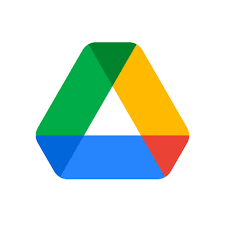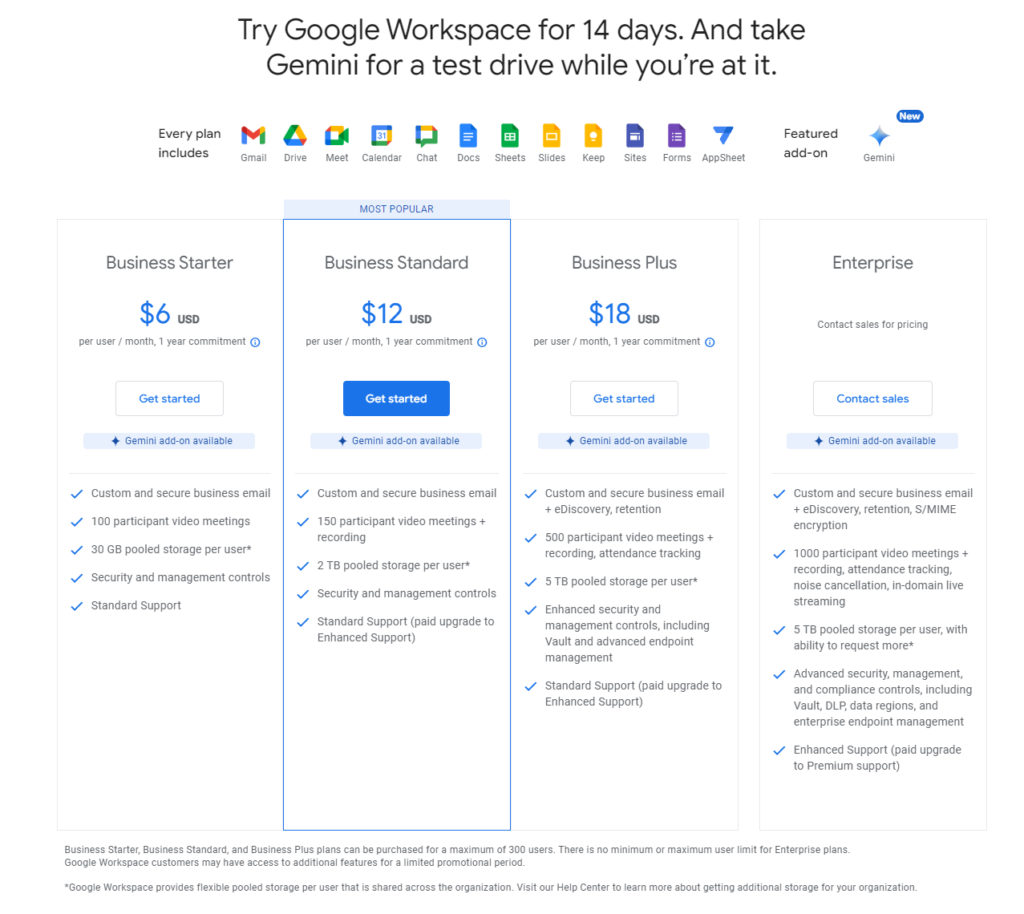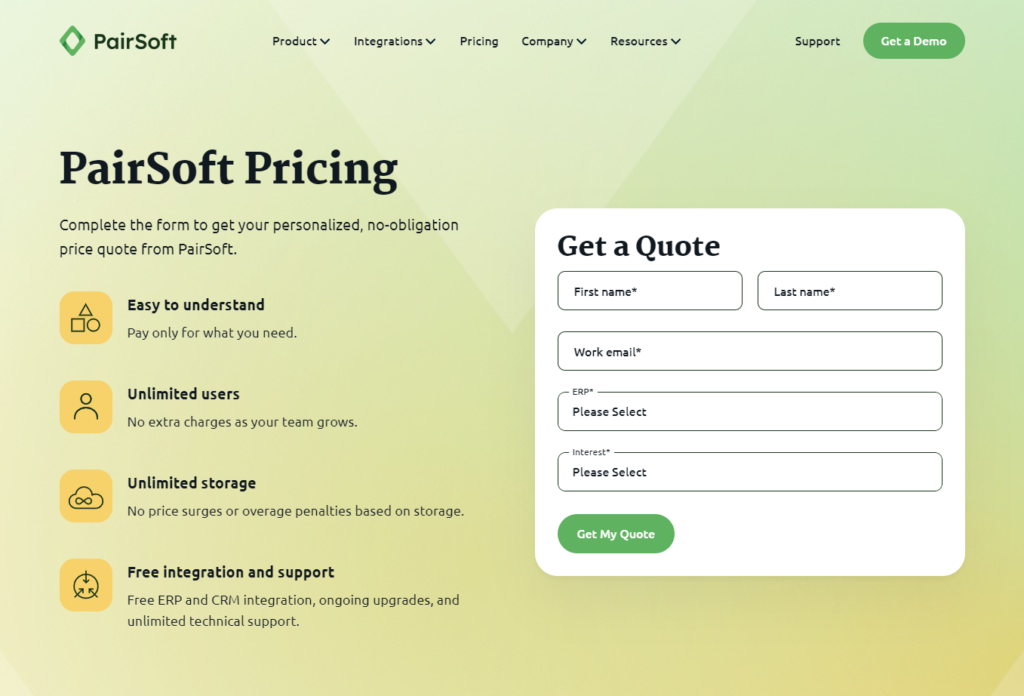In the world of business, managing documents efficiently and securely is crucial. Today, we’re diving into a detailed comparison between Google Drive for Work and PairSoft, two leading document management tools. Each platform offers unique features tailored to enhance business operations, but which one is the best fit for you? Let’s find out.
Google Drive for Work | PairSoft |
|---|---|
| G2 Score – 4.6 out of 5 stars | G2 Score – 4.4 out of 5 stars |
| TrustRadius Score – 8.7/10 | TrustRadius Score – 5.8/10 |
Ease of Use and User Interface
One of the key factors that can make or break your experience with a document management tool is its ease of use and the intuitiveness of its user interface. A good document management system should not only be powerful but also accessible, allowing you and your team to handle documents without a steep learning curve.
Google Drive for Work:
Google Drive for Work is part of Google Workspace, previously known as G Suite. Its interface is one that many users will find familiar, especially if they have used personal Google services. This familiarity is a significant advantage, as it lowers the barrier to entry for new users and reduces training time.
The Google Drive interface is clean and straightforward. Files and folders are easily organized, and the search functionality is robust, powered by the same technology behind Google Search. This makes finding documents a breeze, even among vast quantities of data. Google Drive also integrates seamlessly with other Google apps like Docs, Sheets, and Slides, providing a cohesive experience where documents can be created and edited directly within the drive.
Furthermore, sharing documents is incredibly user-friendly. With just a few clicks, you can share files or folders with team members, either within your organization or externally, with customizable permissions to view, comment, or edit.
PairSoft:
PairSoft, previously known as PaperSave, offers a different approach. It is designed to integrate deeply with enterprise resource planning (ERP) and customer relationship management (CRM) systems, such as Microsoft Dynamics, Blackbaud, and Salesforce. This integration is intended to streamline workflows by reducing manual data entry and enhancing document retrieval directly from within these systems.
The PairSoft interface is more utilitarian, with a focus on functionality that supports complex business processes. It may not be as immediately intuitive as Google Drive, requiring a bit more time for users to become proficient. However, for businesses heavily invested in ERP and CRM systems, PairSoft provides a tailored experience that aligns closely with their existing operations.
PairSoft’s document capture features are particularly robust, offering automated workflows that capture, categorize, and index documents, making them easy to retrieve and process. This level of automation is beneficial for organizations looking to improve efficiency in document-heavy contexts.
Integration Capabilities
Integration capabilities are essential in determining how well a document management tool fits into your existing business environment. Both Google Drive for Work and PairSoft offer integration options, but their approaches cater to different needs and systems.
Google Drive for Work:
Google Drive for Work is highly regarded for its seamless integration with the suite of Google Workspace applications, including Gmail, Calendar, Google Meet, and more. This integration provides a cohesive ecosystem where users can easily transition from emailing to document creation to scheduling, all within the same platform. Additionally, Google Drive supports numerous third-party applications available through the Google Workspace Marketplace, enhancing its utility with tools for project management, communication, CRM, and more.
This wide range of integration options makes Google Drive exceptionally flexible, allowing businesses to tailor their document management system to their specific needs. Whether you’re using productivity tools like Slack and Trello or more specialized software, chances are high that you can integrate them with Google Drive. This capacity for integration simplifies workflows, reducing the need to switch between multiple apps and platforms, thus saving time and reducing the risk of errors.
PairSoft:
PairSoft offers a different kind of integration focus, primarily targeting businesses that use specific ERP and CRM systems. It is designed to integrate deeply with platforms like Microsoft Dynamics, Blackbaud, and Salesforce. This integration allows users to access and manage documents directly from within these systems, which can significantly streamline operations, especially for organizations that rely heavily on their ERP or CRM systems for daily operations.
The strength of PairSoft’s integration lies in its ability to enhance the functionality of these core business systems, embedding document management directly into the workflows that businesses already use. For example, invoices or customer correspondence stored in PairSoft can be directly linked to the corresponding records in a CRM system, providing a seamless flow of information and improving data accuracy and accessibility.

Related: Check out our free SEO suite

Security Features
Security is a cornerstone feature for any document management tool, particularly when handling sensitive business information. Both Google Drive for Work and PairSoft prioritize security but offer different specifics that might suit various business requirements.
Google Drive for Work:
Google Drive for Work benefits from Google’s extensive infrastructure and security protocols, which are among the best in the industry. Google employs advanced security measures including data encryption both at rest and in transit. For data at rest, Google uses strong encryption standards such as AES-128 or AES-256, while data in transit is protected using secure protocols like TLS.
In addition to encryption, Google Drive for Work offers a range of customizable security settings. Administrators can set up and enforce security policies that control user access and permissions, ensuring that only authorized personnel can access sensitive information. This is supported by Google’s advanced two-factor authentication (2FA), which adds an extra layer of security by requiring a second form of verification in addition to the password.
Furthermore, Google provides extensive auditing and reporting tools that allow businesses to track who accessed what data and when, offering insights into how information is being used and by whom. This is crucial for compliance with various data protection regulations.
PairSoft:
PairSoft also places a strong emphasis on security, particularly in its integration with enterprise systems like ERP and CRM platforms. It leverages the security features inherent in these systems, enhancing them with its own measures to protect stored documents.
One of PairSoft’s notable security features is its role-based access control, which allows for precise management of who can view, edit, or delete documents. This is especially important for organizations that need to maintain tight control over their documents due to regulatory requirements or internal policies.
Additionally, PairSoft ensures data security by using encryption protocols to safeguard data both in transit and at rest, similar to Google Drive. The system also includes detailed audit trails, which provide comprehensive logs of all document interactions, crucial for tracking usage patterns and investigating potential security breaches.
Customer Support and Service
The level and quality of customer support provided by a document management tool can significantly impact user satisfaction and operational efficiency. Both Google Drive for Work and PairSoft understand the importance of support, but they offer different types of service that cater to their distinct user bases.
Google Drive for Work:
Google Drive for Work benefits from Google’s extensive support network. Users of Google Workspace, including Drive for Work, have access to various levels of support depending on their subscription plan. For all users, Google provides an extensive online help center, community forums, and basic email support, which is usually sufficient for solving common issues and addressing minor queries.
As businesses opt for higher-tier plans like Business Plus and Enterprise, the level of support increases. These premium plans include 24/7 phone and email support, allowing users to receive immediate help for urgent issues. For Enterprise customers, Google offers enhanced support services, which may include a dedicated support representative and even consultancy services to help optimize the use of Google Workspace in line with business goals.
PairSoft:
PairSoft offers a more specialized type of support, reflecting its focus on integrated solutions for ERP and CRM systems. The nature of PairSoft’s product—deeply integrated into critical business systems—necessitates a high level of support, and PairSoft is structured to provide this. Support services are tailored to ensure that businesses can maximize the benefits of their document management system without disrupting their existing operations.
Support for PairSoft typically includes detailed onboarding assistance, where PairSoft’s team helps configure and customize the system according to the specific needs of the business. Ongoing support is robust, with options for direct phone and email contact, ensuring that any issues can be quickly addressed. For larger enterprises or more complex implementations, PairSoft may offer dedicated account management and even on-site support to ensure the system operates smoothly and efficiently.
Scalability and Customization Options
Scalability and customization are crucial aspects for businesses anticipating growth or needing a document management system that can adapt to their unique processes and workflows. Let’s examine how Google Drive for Work and PairSoft handle these aspects to determine which platform might be more suitable for different types of businesses.
Google Drive for Work:
Google Drive for Work is built on Google’s cloud infrastructure, which is inherently scalable. This allows businesses of all sizes to easily adjust their storage and collaboration capabilities as they grow. From small startups to large corporations, Google Drive can handle increasing volumes of data and more users without significant changes to the underlying system. The process of adding more storage or additional features is straightforward, often requiring just a few clicks in the administration panel.
In terms of customization, Google Drive for Work offers considerable flexibility through its integration with other Google Workspace tools (like Docs, Sheets, and Slides) and a wide range of third-party applications available through the Google Workspace Marketplace. This enables businesses to tailor their document management environment to better fit their operational needs. Whether it’s integrating with project management tools, CRM systems, or specialized applications, Google Drive provides a versatile foundation that can be customized to enhance workflow and productivity.
PairSoft:
PairSoft, designed with a focus on integration with ERP and CRM systems, offers a different kind of scalability. It is particularly suited for medium to large enterprises that require their document management system to grow seamlessly with their core business systems. PairSoft’s scalability is closely tied to its ability to integrate deeply with these systems, ensuring that as a business expands its use of ERP or CRM software, the document management capabilities scale accordingly.
Customization is a strong point for PairSoft, given its emphasis on fitting into established business environments. PairSoft allows for significant customization in how documents are captured, managed, and retrieved, ensuring that the system aligns with specific business processes and compliance requirements. This level of customization can be particularly valuable for businesses in industries like finance, healthcare, or legal, where document handling must adhere to strict regulatory standards.
Pricing
Google Drive for Work:

PairSoft:

Conclusion
In concluding our detailed comparison between Google Drive for Work and PairSoft, it’s clear that each platform offers distinct strengths tailored to different organizational needs and preferences.
Google Drive for Work shines with its highly scalable and flexible infrastructure, making it a superb choice for businesses of all sizes that need a cloud-based solution. Its seamless integration with Google Workspace and a wide array of third-party applications enhances its adaptability, allowing it to serve a diverse range of business operations. Google Drive is especially suited for companies looking for an intuitive and straightforward document management system that employees can quickly adapt to and use effectively.
PairSoft, on the other hand, excels in providing a document management solution that integrates deeply with specific ERP and CRM systems. This makes it ideal for medium to large enterprises whose operations heavily rely on these systems. PairSoft’s strong customization capabilities ensure that it can meet specific industry regulations and compliance needs, making it particularly valuable for sectors like finance, legal, and healthcare.
Read Next:
- GetResponse vs Zoho Campaigns: The Best Email Marketing Tool for 2024
- AWeber vs ActiveCampaign: The Best Email Marketing Tool
- Constant Contact vs Campaigner: Best Email Marketing Tool
- GetResponse vs Omnisend: The Best Email Marketing Tool for 2024
- AWeber vs Benchmark Email: The Best Email Marketing Tool






















Comments are closed.